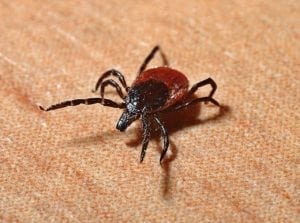According to a story from triblive.com, a recent study demonstrated that Lyme disease cases increased at an “exponential” rate in the ten year period from 2003 to 2013. The area surveyed was western Pennsylvania, and a greater number of kids in cities, towns, and other urban areas saw increases as well. This study was conducted by the University of Pittsburgh Medical Center Children’s Hospital. The data highlights the need for greater awareness of this troublesome disease, even in areas where you would not expect particularly dense populations of ticks, which are responsible for spreading Lyme disease to humans.
About Lyme Disease

Lyme disease is an infectious illness that is caused by bacteria of the genus Borrelia. These bacteria can enter the body and cause disease when a person is bitten by the tick species Ixodes scapularis, commonly known as the deer tick or black legged tick. Symptoms can change and progress the longer a patient goes without getting treatment. Early symptoms include a distinct, red, “bull’s eye” rash (does not appear in all cases), fever, malaise, headache, and sore muscles. Without treatment, symptoms can worsen to include, neck stiffness, facial paralysis, nerve pain, meningitis, sleep problems, and memory loss. Advanced Lyme disease can cause debilitating symptoms such as mental illness and difficulty with movement. To learn more about Lyme disease, click here.
Study Data
According to the study, 285 kids were treated for Lyme disease in 2013, compared to only five cases ten years earlier. Dr. Brian Campfield, one of the co-authors, said that the rate of increase was unexpectedly high. Of the total number of 773 cases assessed by the researchers, 503 were from suburban or urban areas. The percentage of cases that came from these areas also began to increase over time.
The increase in urban cases could be the result of common tick hosts, such as deer and mice, increasing their numbers in suburban and urban areas, therefore carrying more ticks in these habitats as well.
How to Avoid Infection
To prevent infection, avoid areas of dense brush or high grass, wear long sleeves, and use bug repellent containing DEET. After an outdoor excursion, it also helps to examine yourself for ticks, tumble dry clothing on high heat for ten minutes (which can kill ticks), and to shower within two hours after returning indoors.






